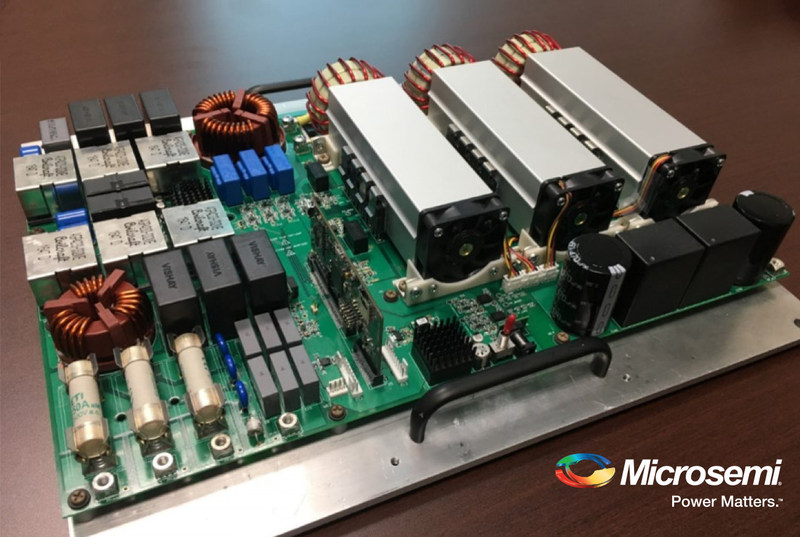Microsemi Corporation, one of the most premium providers of semiconductors solutions just came forth with its new scalable three-phase 30-kW Vienna power factor correction (PFC) topology reference design. What’s special about this design is that it features MOSFETs and Silicon Carbide (SiC) diodes. Microsemi Corporation developed this design by collaborating with North Carolina State University. The new scalable three-phase 30-kW Vienna power factor correction (PFC) topology reference design presents a highly user friendly solution that is perfect for rapid Electric Vehicle (EV0 charging and several other high power industrial and vehicle applications.

Fig.1 : Microsemi PFC Vienna
The best things about the new scalable three-phase 30-kW Vienna PFC topology reference design is that it will enable the buyers with much more efficient switching, alongwith, higher short-circuit withstand ratings when it makes use of firm’s strongest SiC diodes and MOSFETs. Microsemi plans to showcase the new scalable three-phase 30-kW Vienna power factor correction (PFC) topology reference design at the PMIC Europe 2018 slated to take place from 5-7 June in Nuremberg Germany.
Leon Gross, the business unit manager and vice president of Microsemi’s Discrete and Power Management group, adds that, “As the automotive market transitions toward more hybrid electric vehicle (HEV) and battery electric cars, SiC allows for better efficiency, resulting in better mileage. This continues to drive high demand for these SiC devices in our portfolio, as well as our other high-reliability product offerings. After successfully releasing our SiC MOSFET and diode product portfolio over the past few years, our new three-phase three-switch three-level PFC reference design is a concrete example of how to leverage these parts in demanding applications that showcase its ruggedness, high performance and overall value.”
Microsemi’s new scalable three-phase 30-kW Vienna PFC topology reference design has several design files along with Microsemi’s gen-next SiC diodes as well as MOSFETs which is an open source digital control software as well as a user guide. This topology has an edge over the single phase PFC and 2 level, six-swith boost pulse width modulated rectifier designs.
Filed Under: News


Questions related to this article?
👉Ask and discuss on EDAboard.com and Electro-Tech-Online.com forums.
Tell Us What You Think!!
You must be logged in to post a comment.